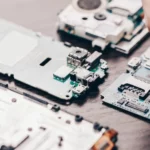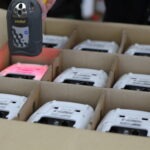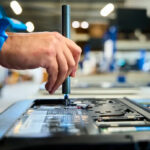Why choose refurbished equipment for your company?
Renewals of computer equipment are an integral part of the life cycle of a computer park. Stop production of equipment, end of manufacturer’s warranty, update of the operating system, changes of use…
Beyond the cost, an IT equipment renewal involves many technical and operational issues to consider:
- Uniformity of the fleet in the context of a partial renewal
- Training employees in the use of new equipment
- Change of the skin if the form-factor differs from one generation to another
However, they do not represent a fatality. Using reconditioned equipment extends the life of your fleet and therefore delays its renewal. It is also a good way to enroll the company in a sustainable digital approach.
Refurbished equipment, what are we talking about?
Refurbished computer equipment is not to be confused with second-hand. The reconditioned embodies an IT asset used, even very little, then tested. These are often computer parks taken back to be resold.
To be qualified as “reconditioned”, computer equipment must have:
- received a complete “software reset”, i.e. the total erasure of the configurations and applications installed on the equipment
- benefited from approved and certified data erasure
- consumables replaced with new (strap, stylus, touch screen, keyboard, etc.)
- replacement of damaged components to ensure quality professional use
- benefited from a gradation / notation according to its aesthetic condition
Refurbished computer equipment may be recent but they are generally obsolete, that is to say out of production by the manufacturer. Refurbishment thus allows them to take advantage of a second, third or even fourth life to continue to meet the needs of companies wishing to extend the life of their computer equipment.
Save money
Refurbished equipment is generally more expensive than second-hand, but also more qualitative, with longer lifespans. Prices compared to new are between 15 to 25% cheaper for refurbished. Expect a 30 to 40% reduction in new prices for a refurbishment. If the service is limited to a conclusive ignition test, the prices can even represent 50% savings compared to the purchase of new computer equipment.
Reuse can thus be part of any policy aimed at reducing expenses related to the renewal of computer equipment.
If the economic benefit is often put forward, it is not the only advantage that pushes companies to buy their barcode readers, cash register equipment, payment terminals, computers, refurbished smartphones.
One of the major issues to which refurbished solutions provides a solution is indeed the homogeneity of the fleet.
Ensure the homogeneity of its IT equipment
The uniformity of the IT park represents a major challenge. Employees who all work from the same devices also handle the same functionalities and the same processes, use the same accessories and the same software versions. By keeping a homogeneous fleet for as long as possible, the entire computer system of the company is facilitated.
This standardization also makes it possible to standardize the data drawn from the use of the computer equipment. An essential homogeneity to facilitate the collection and processing of information for strategic analyzes by the general management.
Stay in control of your IT projects
Using reconditioned equipment is a major advantage. Let’s say that a company finds itself faced with a breakdown of its usual manufacturer of computers, barcode readers or payment terminals.
The use of reconditioned equipment allows it to temporize its renewal of IT equipment, to save time by maintaining a homogeneous equipment for longer.
Far from competing with new equipment, refurbished equipment offers IT and mobile fleet managers flexibility in managing their fleet. They can thus ensure a smoother transition between 2 generations of equipment while avoiding the inconvenience associated with production disruptions.
Aligning with regulations for responsible digital
Legislation governing computer parks is becoming more rigid and multiplying. Increasingly strict, they are aimed in particular at protecting the environment and combating electronic waste. Most recent regulations are also moving in the direction of promoting circular economies.
Objective: to limit the waste of resources and the environmental impact due to the production of new products:
- The AGEC law, “anti-waste for a circular economy”, has been in force since January 1, 2022. It obliges companies to recycle and reuse
- The law for digital sobriety (REEN law) plans to reduce the environmental impact of IT in France
- The anti-waste law implies that manufacturers of electrical appliances must communicate the repairability index of their equipment, since January 1, 2021
- The November 2020 European Commission resolution on more responsible digital consumption calls for combating planned obsolescence and promoting reuse and reuse
Limit its ecological impact and reduce its carbon footprint
Opting for refurbished computer equipment means considerably reducing your carbon impact. A new office computing device can emit between 30 and 400 kilograms of CO2 equivalent (kg CO2 eq.). A substantial footprint, mainly due to its production. A reconditioned computer machine represents on average only 10% of CO2 due to its refurbishment, 18% linked to its use, 3% to its transport and 1% to its final recycling.
Reuse also makes it possible to preserve abiotic raw materials from being overused in the production of new devices. It is also the best way to safeguard biodiversity and limit our water consumption.
Codeo has already avoided the emission of 3,100 tonnes of CO2 in 2019, thanks to its promotion of refurbished computer equipment. Our group is committed to a circular, greener and more sustainable economy. Refurbished therefore allows us to support companies in their objectives in terms of Corporate Social Responsibility (CSR), low-carbon strategy and Environmental, Social and Governance (ESG) investments.
At Codeo, the reuse of computer equipment thus embodies the foundation of our CSR policy.
Reliable reconditioning
Refurbished equipment is subject to meticulous repairs. They are also tested to ensure their performance.
In detail, most of the second-life assets managed by Codeo follow the same restoration process, known as “test and clean”:
- diagnostic tests and external condition grade assessment;
- possible repairs and replacement of defective parts;
- cleaning and replacement of screens, shells, keyboards, membranes, etc. ;
last test for control before sale; - sale under warranty up to 3 years.
Depending on the case, Codeo carries out either a repair or a reconditioning. To find out all about our refurbished equipment offer, see our page on the renewal of computer equipment.
For a personalized study of your project, do not hesitate to contact our teams!




